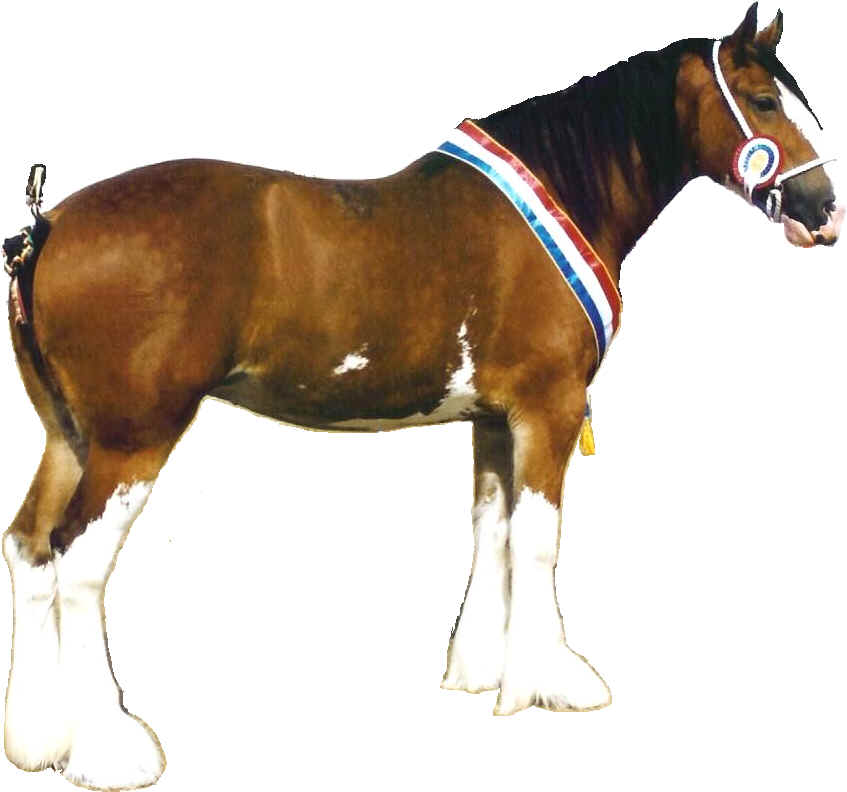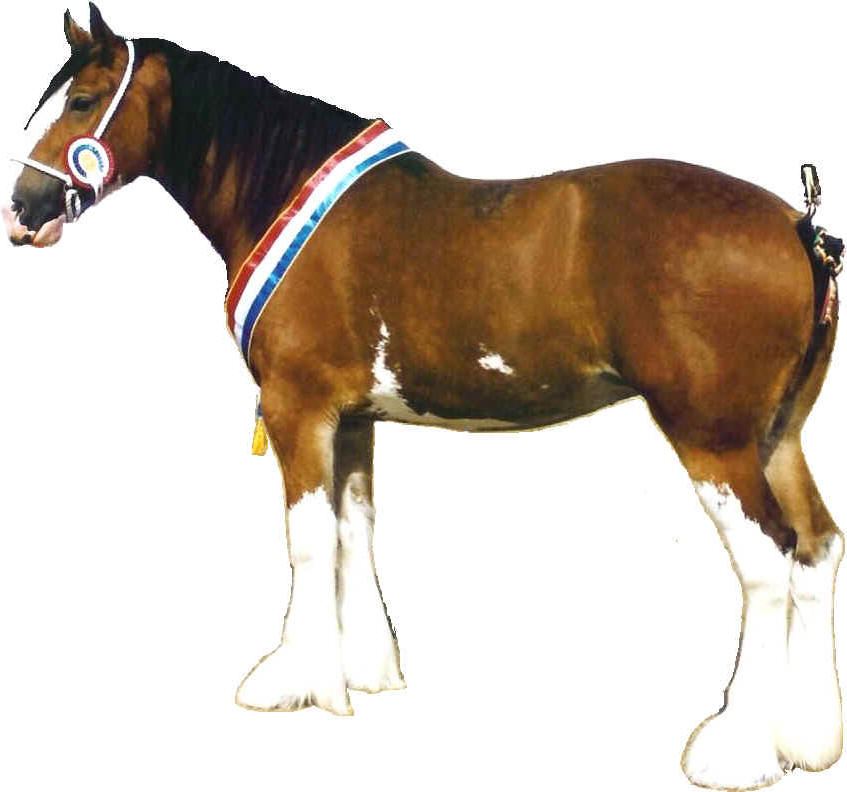 Arradoul Clydesdale Horses, Scotland
Arradoul Clydesdale Horses, Scotland


|
|
|
|
The following article on riding Clydesdale horses was printed in the February 2005 issue of Scottish & Northern Equestrian. To access their website, which includes full information on Scotland and North of England's glossy monthly for horse and pony enthusiasts and its online classified advertising service, please click the banner link above. Clydesdale Horses – Under Saddle Riding Scotland’s Native Horse.
A new era has most definitely begun within the Native horse sphere in Scotland. Although all Native horses have undoubtedly increased in popularity in the UK and particularly in Scotland, it must be remembered that riding them is a fairly recent concept. Highland and Shetland Ponies have only graced the ridden class show rings at the Royal Highland Show for a relatively short period of time. Highland Ponies saw their debut in the ridden show rings in the early 60’s, originally as Mountain and Moorlands. They latterly secured their own ridden section only twenty years ago in 1984. Shetland ponies followed suit from their origins under saddle along side Exmoor’s and Welsh ponies. To date, the Clydesdale Horse has remained an in-hand exhibition. The last few years have however witnessed an unprecedented increase in the popularity of competing Clydesdale Horses under saddle both along side other Native horses, and within sections of their own right. Recent equestrian years have bared witness to the increase in popularity of Coloured Horses, with CHAPs founded in 1983 – it is now the turn to recognise that the Clydesdale horse as a ridden equine is smartly following suit. Indeed many ‘traditional’ Coloured Horses or Ponies boast the weight, size and feathered leg (to name but a few) characteristics of the Clydesdale Horse. Thus increased popularity of CHAPs has bolstered owners of ridden Clydesdales into competitive action. Clydesdale horses can now be found in a variety of competitive spheres under saddle – and are undoubtedly here to stay. Originally developed to be ridden into war by knights clad in armour, Clydesdale horses now ride into battle against each other where modern warfare now commences within Scottish show rings. Many top agricultural and equestrian shows including Turriff, Wartle, Kittochside, Lourin and Aberdeen Clydesdale Show now boast classes specifically for Clydesdales under saddle, with entry numbers continually rising – Clydesdales are also still raced at Marymass. At shows where specific classes aren’t available you will find riders entering their horses in Hunter, Riding Horse, Heavy Weight, CHAPs and even Working Hunter classes, as the demand to compete these horses continues to rise. It is rumoured that 2005 will see classes introduced to the Black Isle, New Deer, and Keith Country show, whilst it is hoped a demonstration of Clydesdales under saddle will be held at the Royal Highland Show. For those of you whom might remain sceptical about the abilities of the Clydesdale, I can only ask you to try it out before you dismiss it! From personal experience of competing with our Clydesdales I find it difficult to downscale and return to my 15.3hh hunter – it’s like driving a powerful Range Rover, and then swapping to a Fiat Punto with a 1.1 engine! Clydesdales are fantastically fluid, comfortable, bold and terrifically outgoing (in a trusting manner!) Their strength simply has to be enjoyed – they are certainly not slow and cumbersome – they can jump very well, and their gallop is outstanding! Yet their power is not to be misunderstood – a Clydesdale horse is more than capable of matching the dressage score of any lighter weight horse – their extensive brain allows them to understand much better what you are asking them to do – they are characteristically biddable and calm horses, they want to learn, and thus they learn very quickly. In 2003 a registered Clydesdale Horse qualified for HOYS as a ridden traditional CHAP. To Further demonstrate their versatility; the Edinburgh police force currently boasts several Clydesdale police horses that attend many functions in and around the city, including football at Murrayfield; Shires and Clydesdales are used for riding for the disabled; they are used for trekking particularly at West Highland Heavy Horse Centre where Clydesdales out number all other equine breeds; they are ridden within pipe and army bands; are ridden by many private and team drivers to maintain fitness levels and can even be found in competitive endurance riding. In addition to their desirability as a Native horse of Scotland for in-hand showing and breeding, the value of ridden Clydesdale horses is soaring – you can now expect to fork out an additional £1000 (or more) for a broken Clydesdale in comparison to an unbroken Clydesdale of a similar age and quality. Furthermore, as the number of ridden classes throughout Scotland continues to rise, I can only predict that this value will rise yet further. Clydesdales are already highly sought for throughout England and with exports to Holland, Germany, Italy, Canada and the States consistently high, opening the Clydesdale horse to the ridden market has meant that we find we don’t have the supply to meet the demand! Although many traditional ideas for the use of the Clydesdale as a mechanism for farm work may oppose the use of heavy horses for riding, it must be remembered that the same opinion was once held against riding Highland Ponies. This view has successfully been reversed – with 71 ponies entered for the Royal Highland Show in 2004 as proof of their continued strength. Opening the breed to the ridden market has created a viable option for horses that aren’t at the top level of in-hand showing, and this can only help to secure the future of this once rare breed. Lastly, it must be noted that the younger humans championing the breed want to ride and see the horses ridden – these younger handlers are the future of the Society - So watch this space - riding Clydesdales has arrived!
Copyright No part of this publication may be reproduced or copied in whole or in part without the permission of the publishers [or author]. The views contained within the magazine are not necessarily the views of the publishers. Full info available from Scotequest.com
|
|
|
|